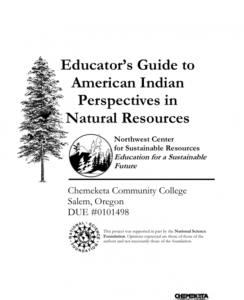NCSR: Educator's Guide to American Indian Perspectives in Natural Resources

This 231-page guide addresses issues, attitudes, and practices of our Native American Indian society relative to environmental and natural resources topics. The guide poses a series of questions developed by teachers on key topics whose answers are designed to help non-Native Americans in teaching about Native American perspectives.
The guide answers the following questions: 1) What is the rationale for including Native perspectives into a natural resource program? 2) What are some of the similarities and differences among tribes? 3) What is sovereignty? What are some of the laws and treaties between the tribes and the U.S. government that determine the use and management of natural resources? 4) What are some similarities and differences between the historical and modern use and management of natural resources by tribes? 5) What are the current conflicts within and among tribes regarding management practices today? 6) What are some differences between scientific and Native American ways of knowing or understanding of the environment? 7) Did low population densities affect the historical use and management of resources? How do current population stresses affect tribal use and management practices? 8) In what ways can tribal approaches to natural resource management be applied to the large landscapes, large populations, and large urban centers of our society today? 9) What are the best and most appropriate ways to partner with local tribes? What ethical considerations may be necessary?
The guide also includes the following sections: Current ideas on Native American natural resource use and management, Educational Resource, and Appendix.
About this Resource


Comments